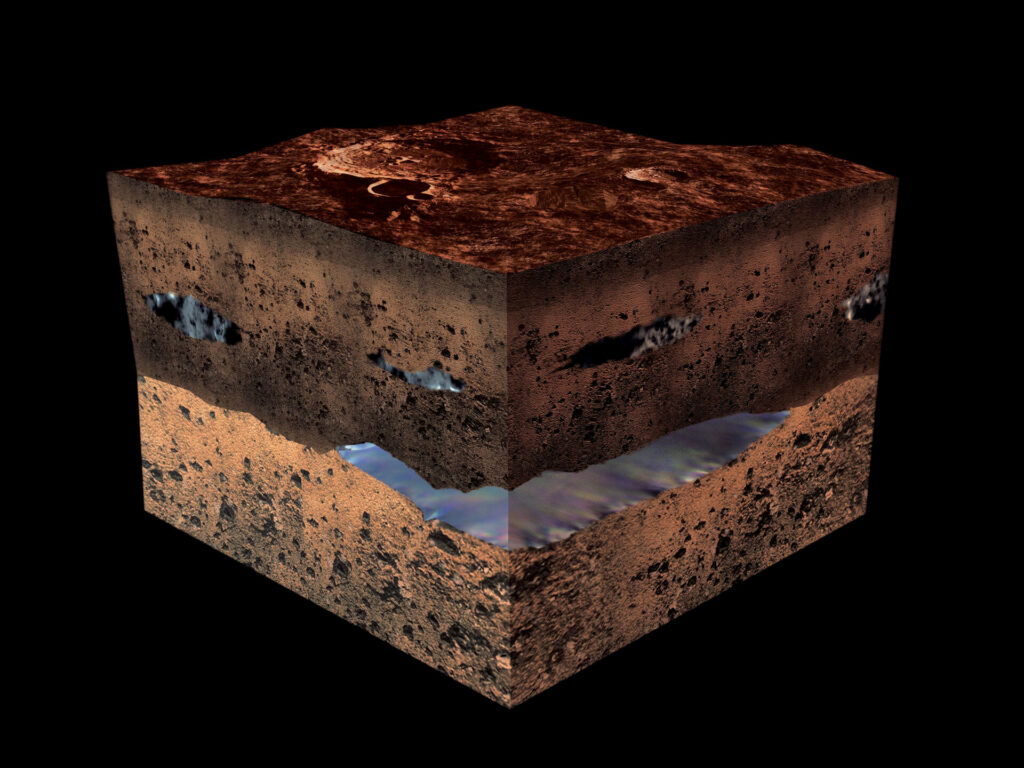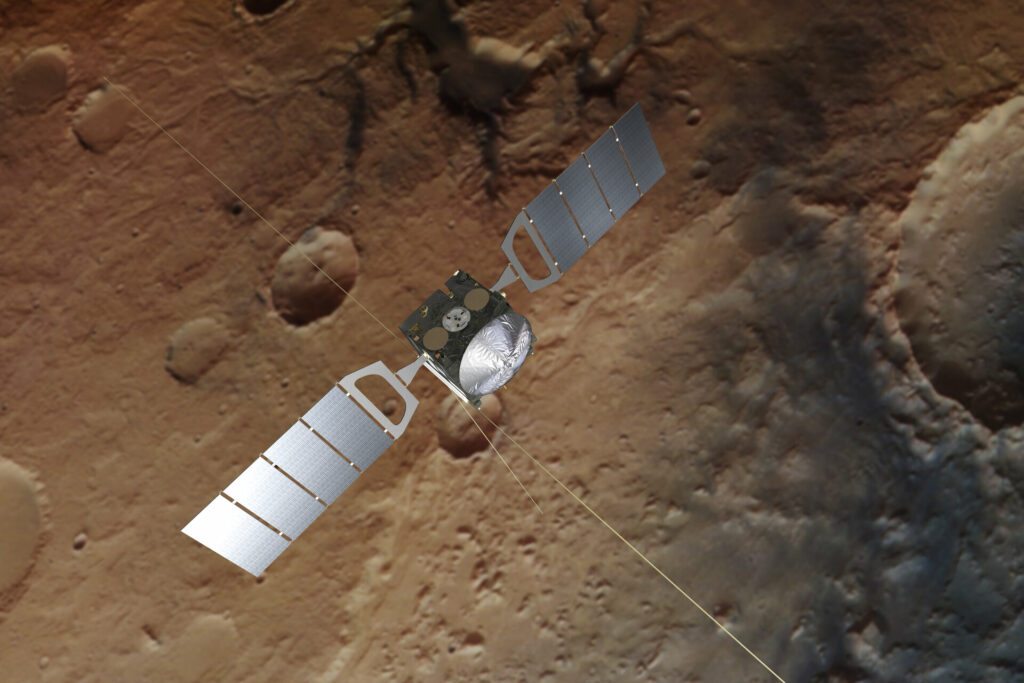Specialists of the National Institute of Astrophysics of Italy have developed a new software designed for the MARSIS radar installed on board the Mars Express probe. It will allow the instrument to obtain more detailed data on the subsurface layers of Mars and Phobos.
Finding water on Mars
Mars Express was launched in 2003. It became the first European spacecraft to enter orbit around another planet. There are nine scientific instruments on board the Mars Express, including the MARSIS radar. Its main task is to search for liquid water and water ice under the surface of Mars. MARSIS is able to probe the surface of the planet to a depth of 5 km. Such a large penetrating power is achieved by the fact that the main radar antenna has a diameter of 40 meters (it consists of two retractable 20-meter rods, there is also an additional 7-meter antenna).

Over the years, MARSIS has transmitted a large amount of information to Earth. One of its most famous finds was the discovery of traces of the existence of lakes under the south pole of Mars. There is still a discussion among scientists about the interpretation of the data collected by the radar.
New software for the old radar
Despite the substantial age of Mars Express, the device is still in good condition and ESA regularly extends the duration of its mission. In this regard, the engineers decided to update the MARSIS software, which was written more than 20 years ago — back in the days of Windows 98.

The new software includes a number of updates that improve signal reception and data processing on board Mars Express, which allows increasing the quantity and quality of information sent to Earth. Previously, MARSIS relied on sophisticated technology that stored a lot of high-resolution data and filled its onboard memory very quickly. Now the instrument will be able to “discard” unnecessary data. Thanks to this, mission specialists will be able to turn on MARSIS for five times longer and explore a much larger area with each pass.
Currently, the new software is already being loaded on board the Mars Express. It is expected that thanks to it, the device will be able to conduct a more detailed study of the south pole of the Red Planet, which will allow confirming or denying the presence of hidden lakes there.
Recall that the Ingenuity drone helicopter located on Mars has also recently received a new patch.
According to https://www.esa.int
Follow us on Twitter to get the most interesting space news in time
https://twitter.com/ust_magazine
